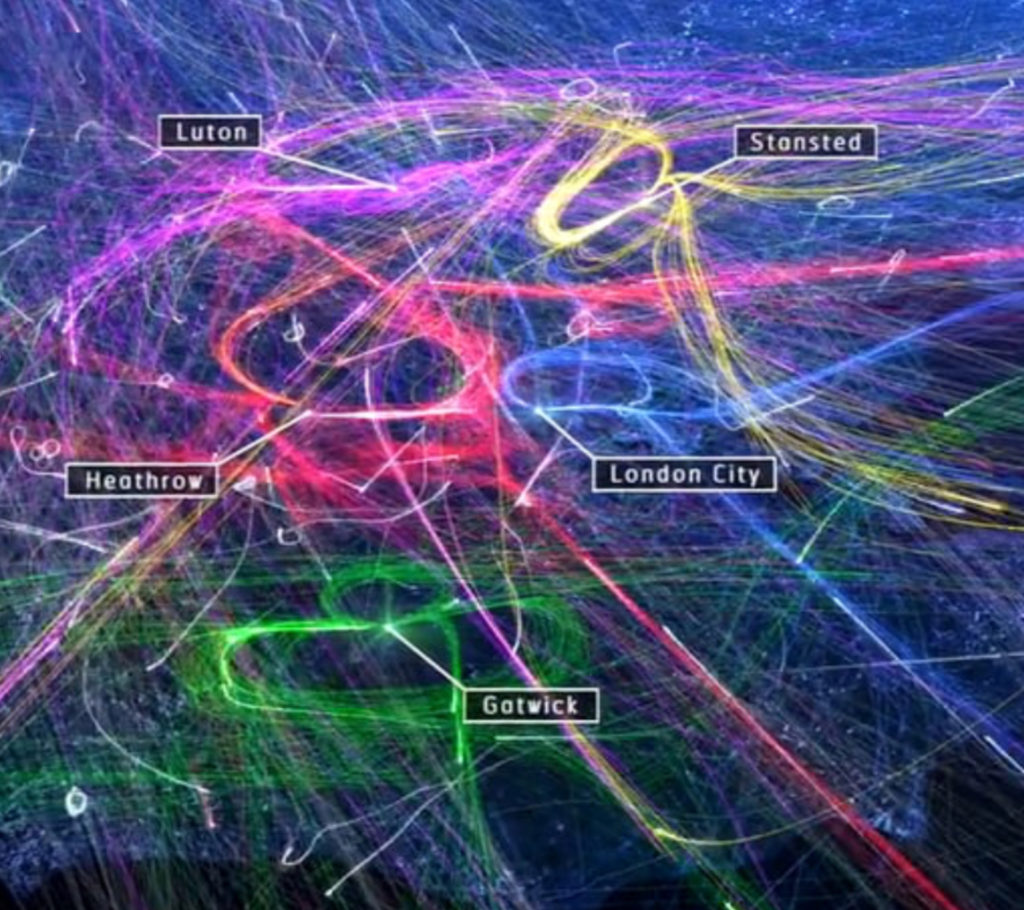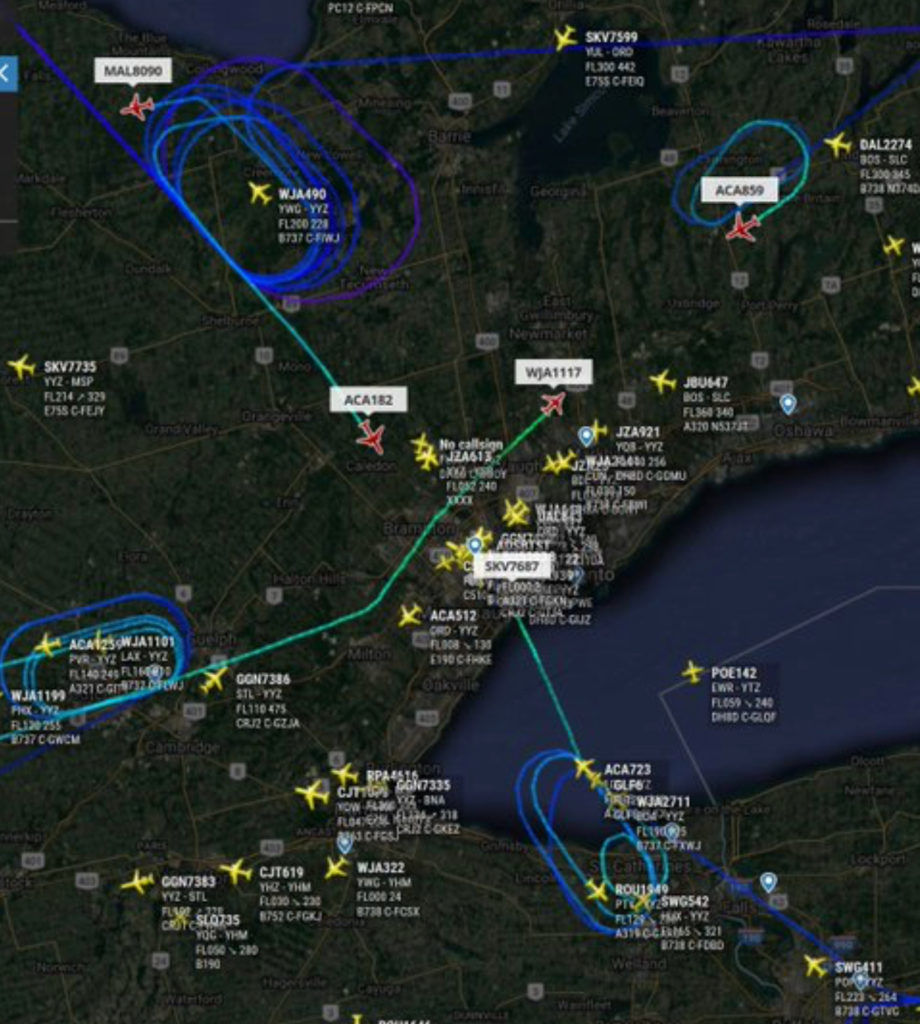
Heathrow airport in the UK has been down the capacity management path now being traveled by Pearson airport. Heathrow has acknowledged that it has been at capacity for some time. According to NATS (National Air Transportation System), the UK company responsible for air traffic, More than 11000 aircraft a month, half of all aircraft flying into Heathrow, go into a hold first. A hold, or stacking, is a way of queuing up for a landing slot by slowing down flights either enroute or close to the airport and flying circles in the sky.
At Heathrow airport, according to the UK Airports Commission 2015 report, congestion is costing the London economy billions. Some of these costs are hidden, such as reduced attractiveness as a business or tourist destination, some are easily tracked, such as increased operating costs including wasted time and fuel burn in a hold. Currently, aircraft can remain in a holding pattern for 5 to 45 minutes.
NATS estimates that a 2016 update to its holding procedures, reduced average hold times by one minute per arrival. This one minute resulted in saving over 35,000 tonnes of CO2, the equivalent to more than 11,000 tonnes of fuel, annually worth £4m at current fuel prices.

In addition to traditional holds, Pearson is also utilizing a technique call “flow control”, although a bit more efficient than a traditional hold, it still results in delays and fuel wastage and increased CO2 emissions. It also adds a strain on the airport the aircraft is departing from, as the aircraft is held at the departure airport ( often with the passengers boarded and even engines running) until a slot is available at Pearson.
Heathrow airport is solving its own capacity issue by building a new runway far enough from the existing runways to enable simultaneous landings. Unfortunately, Pearson is unable to follow in step. Like a tiny house, Pearson simply has no room to expand, and although it has 5 runways today , it can only use two of those runways for simultaneous landings (just like Heathrow today). This is the airside limitation that the GTAA is unable to fix unless it expropriates adjacent privately owned and occupied land.